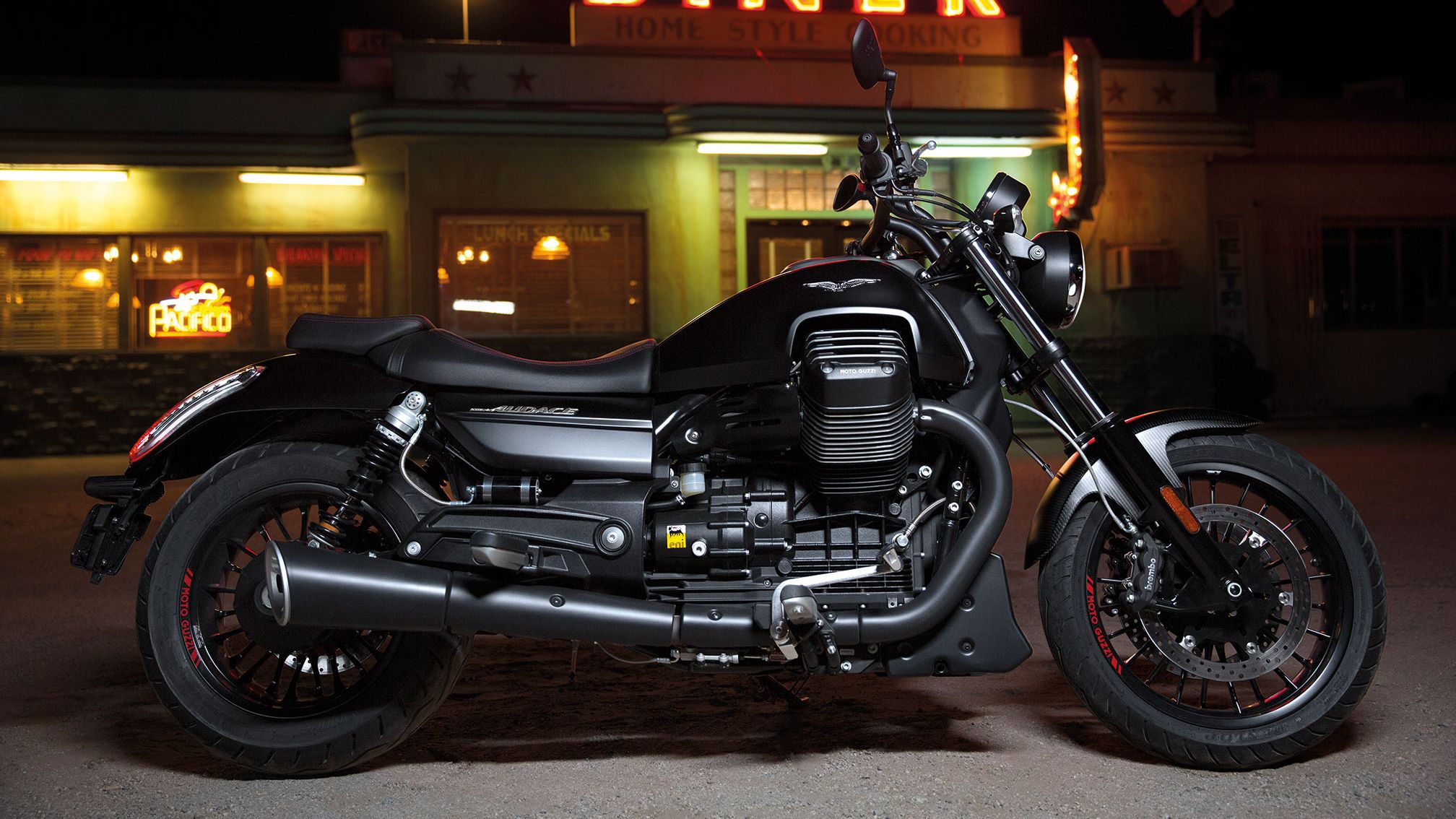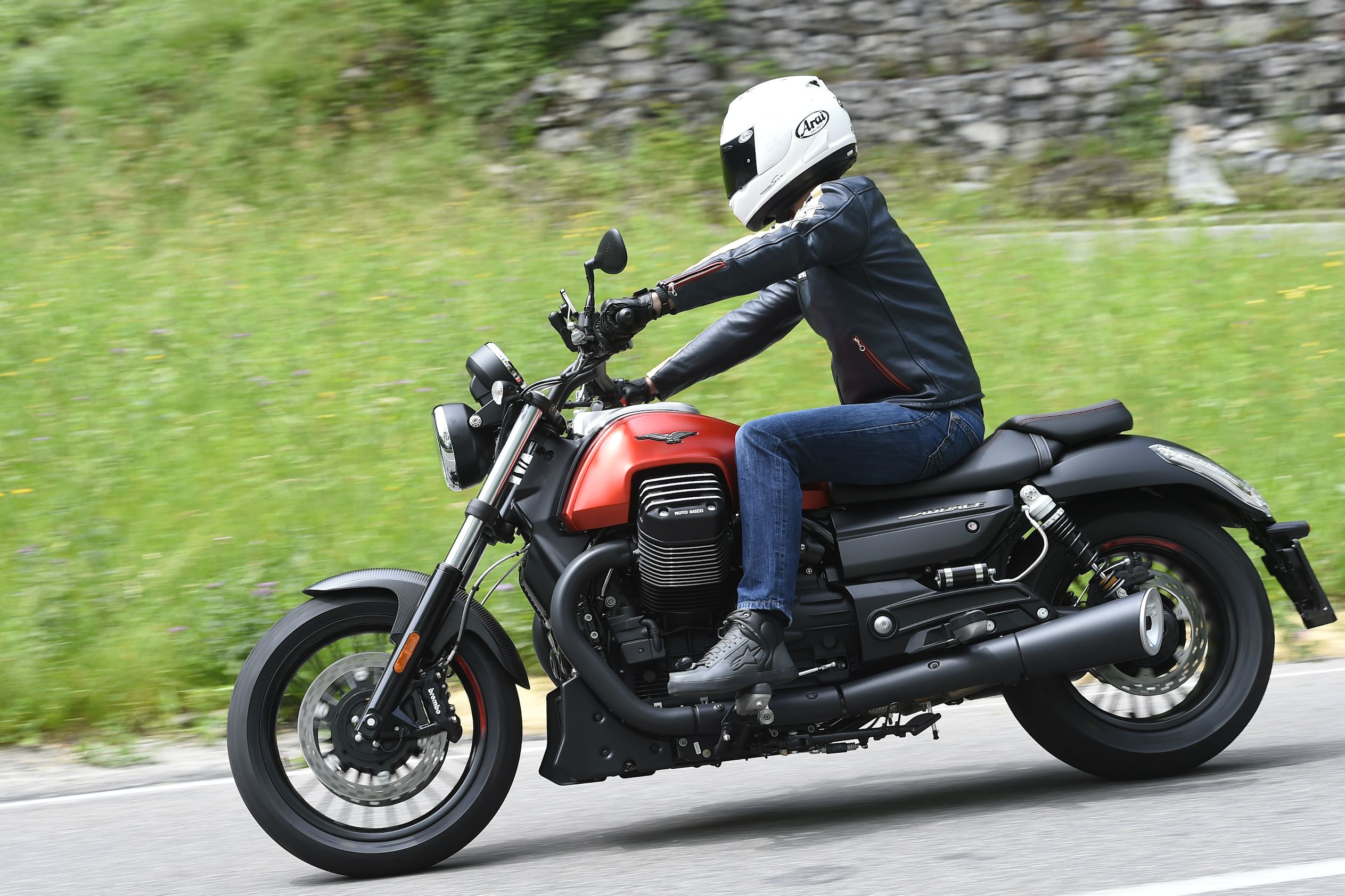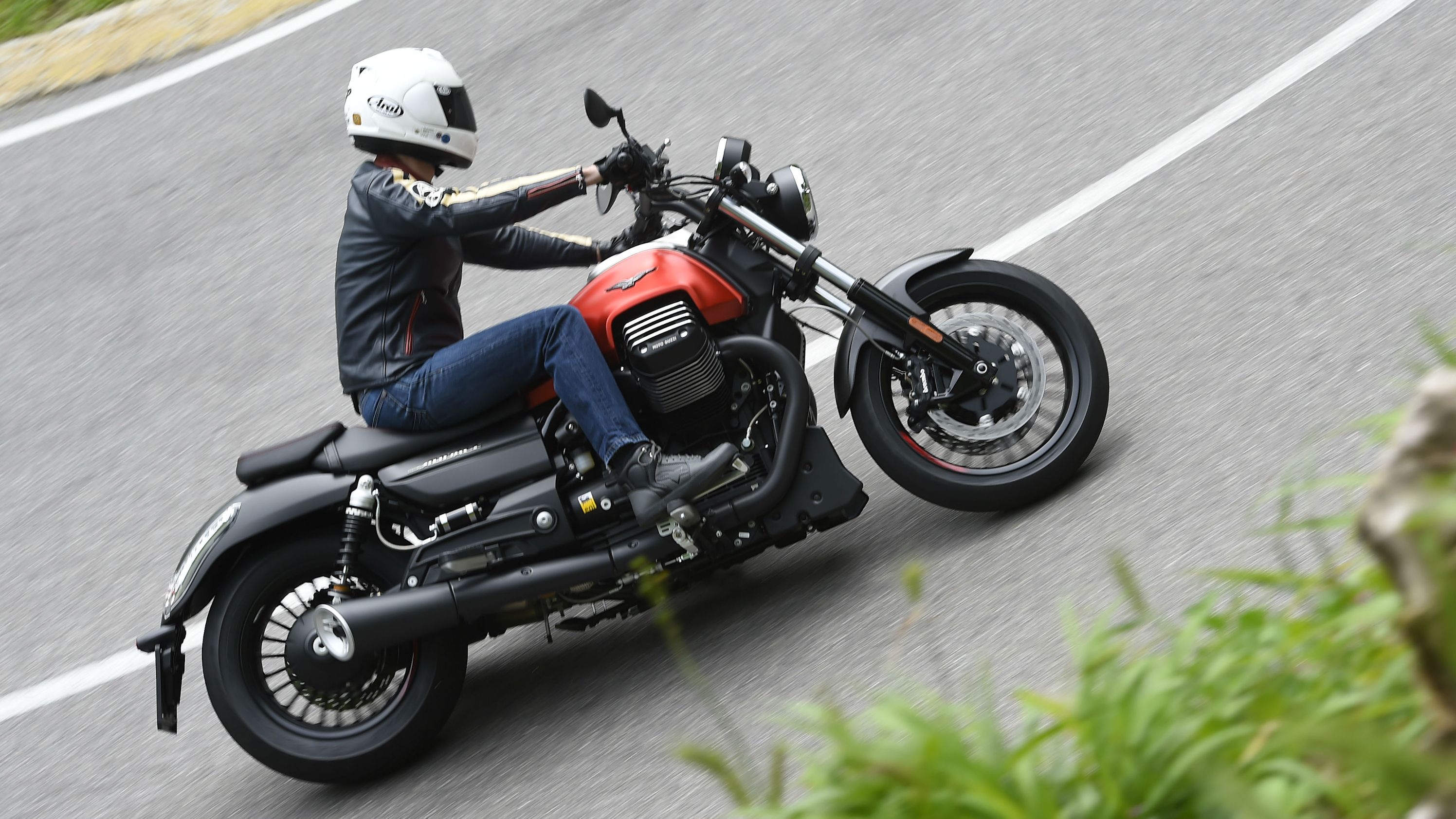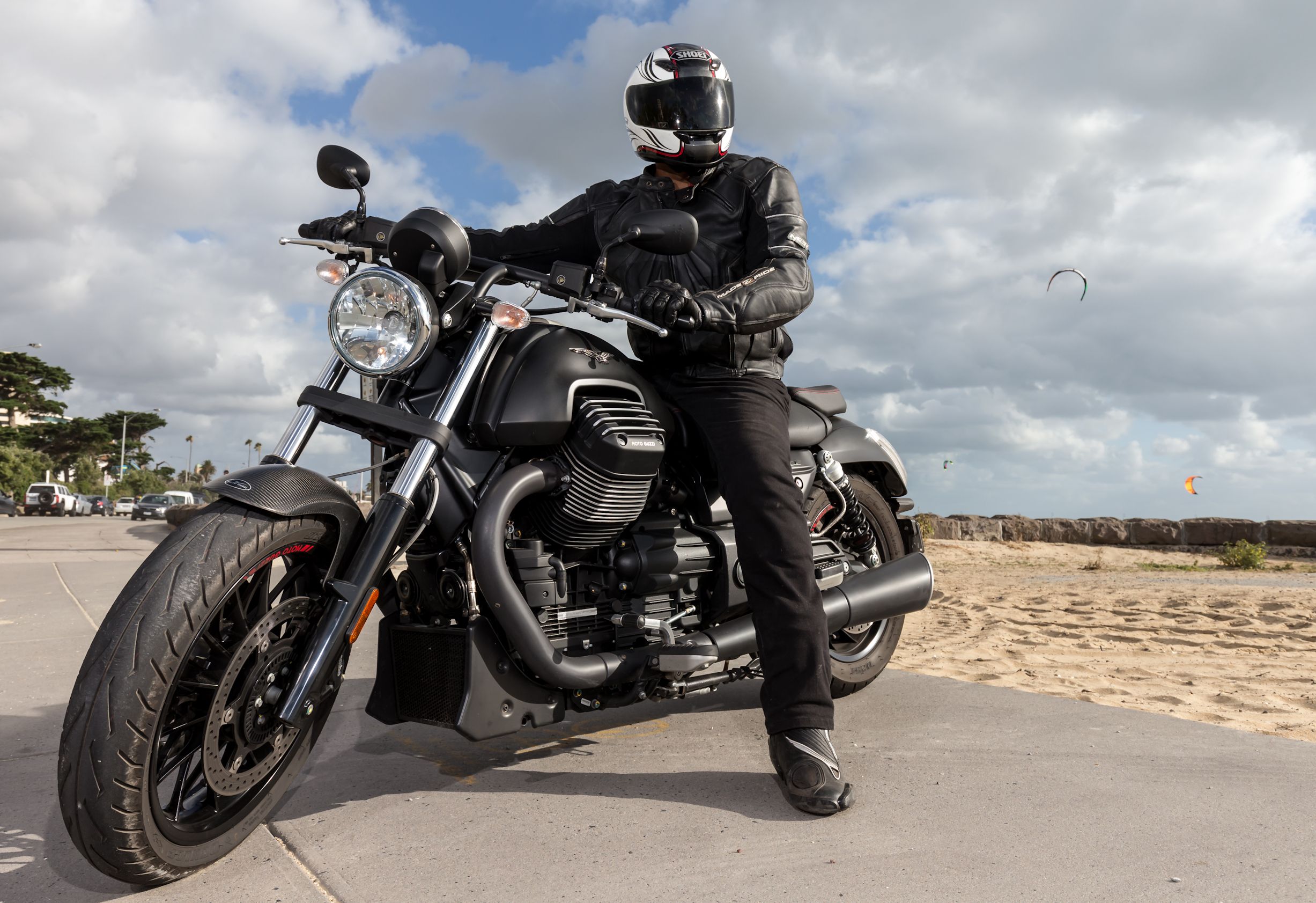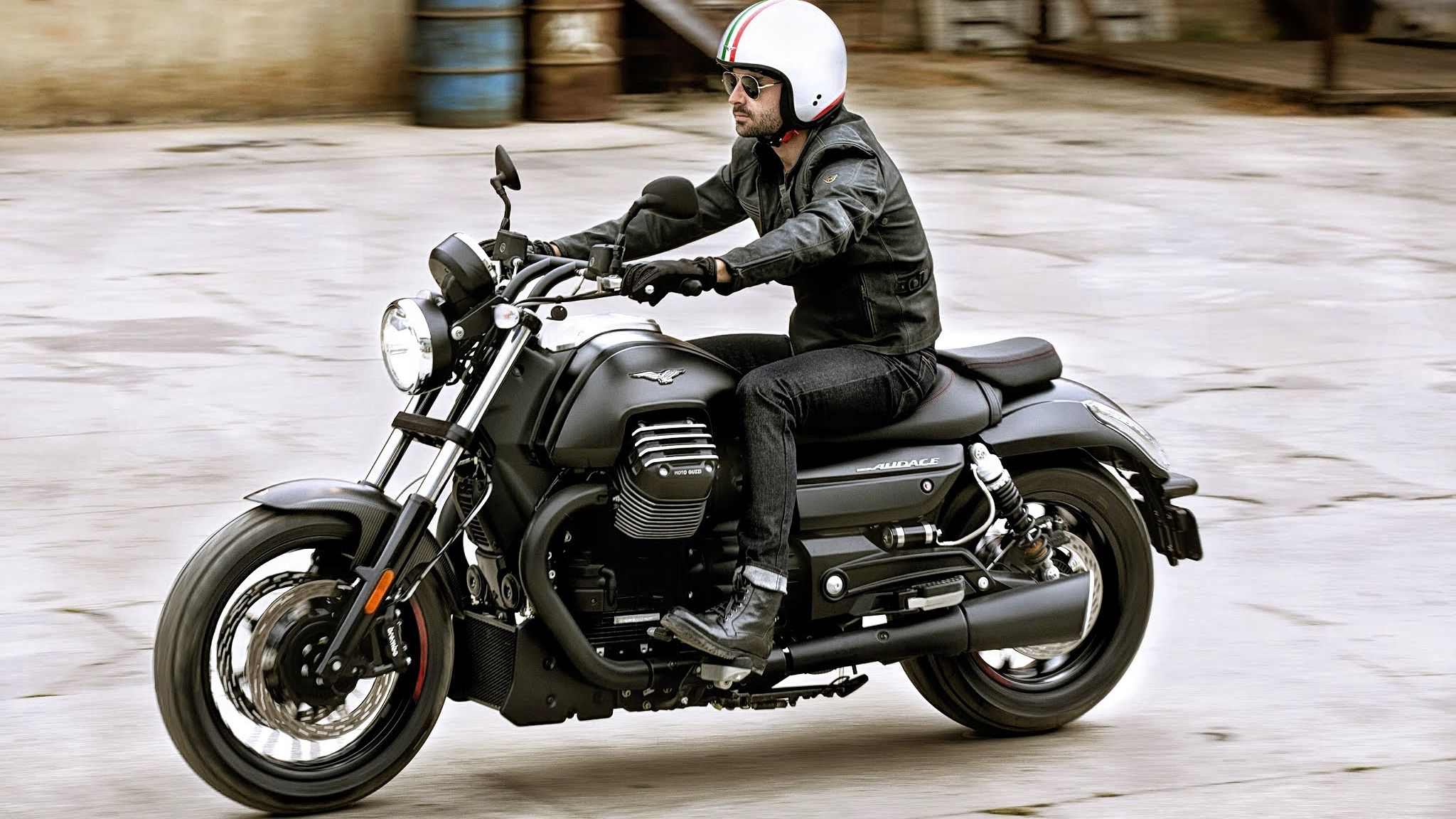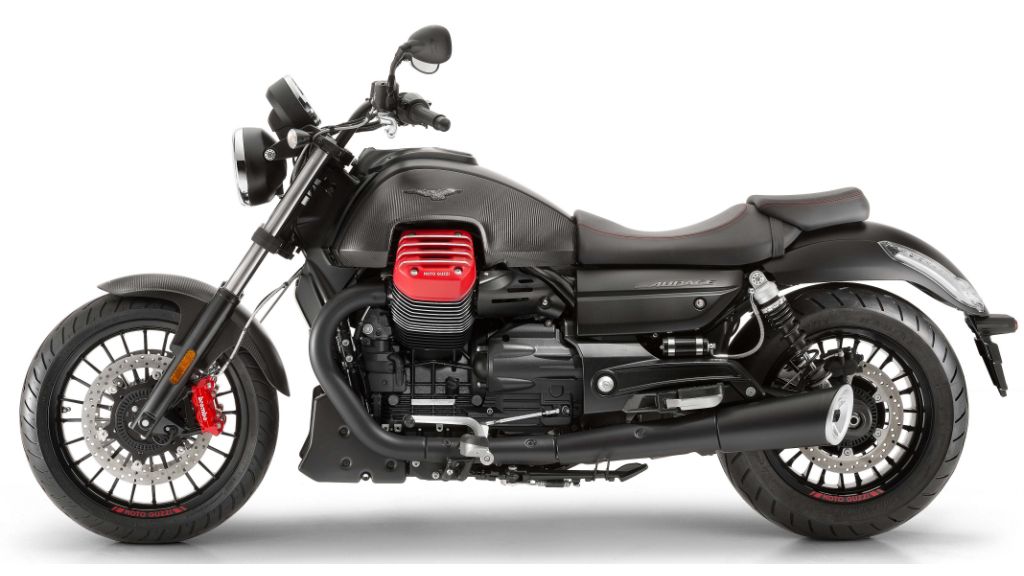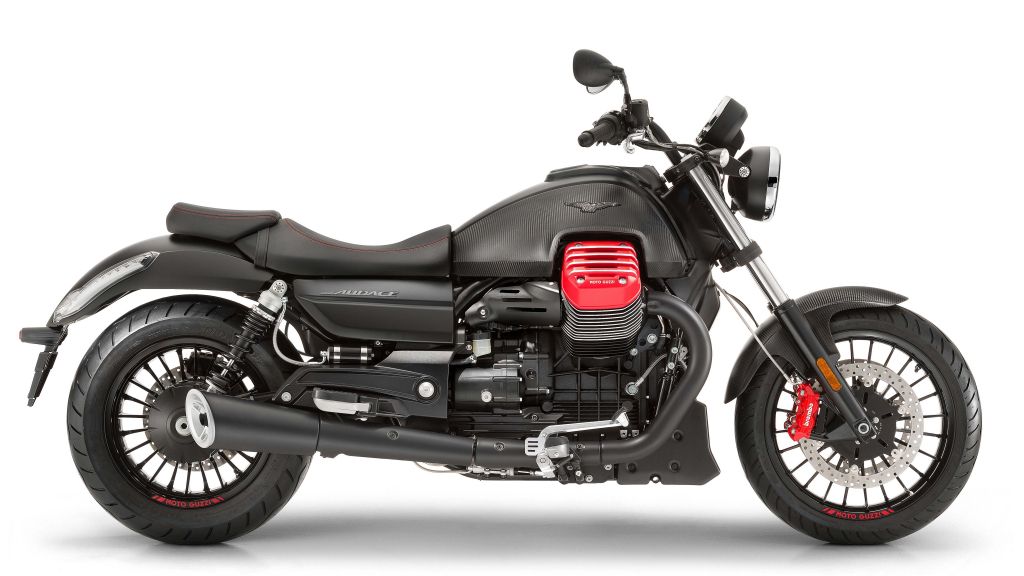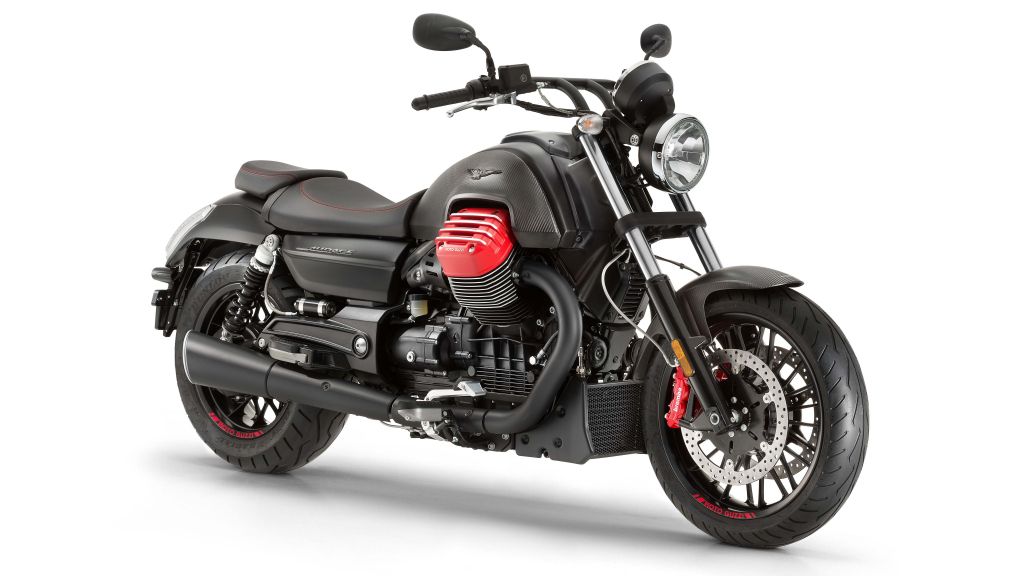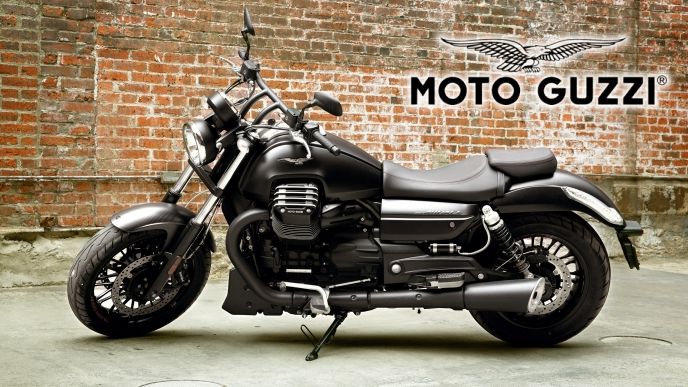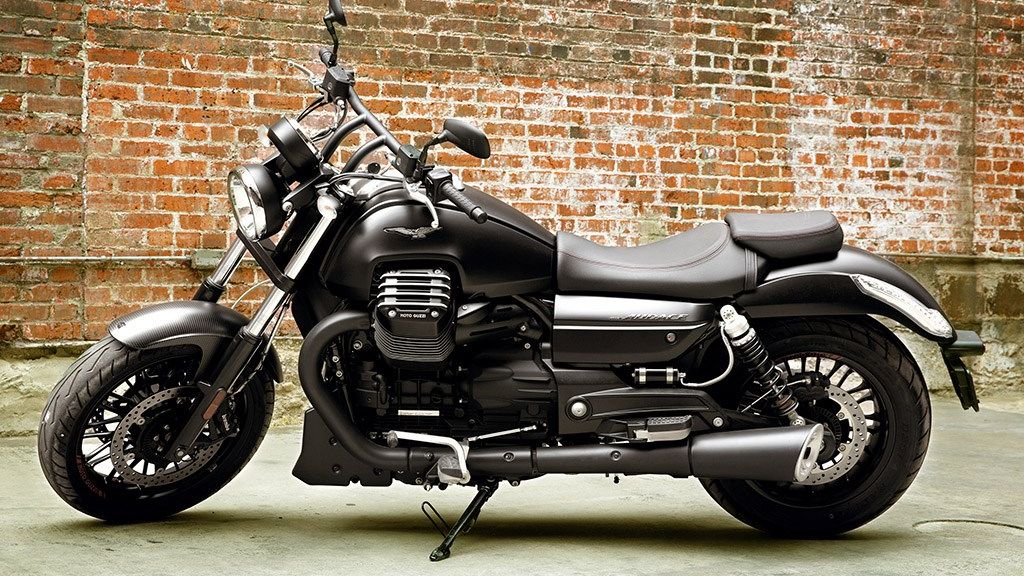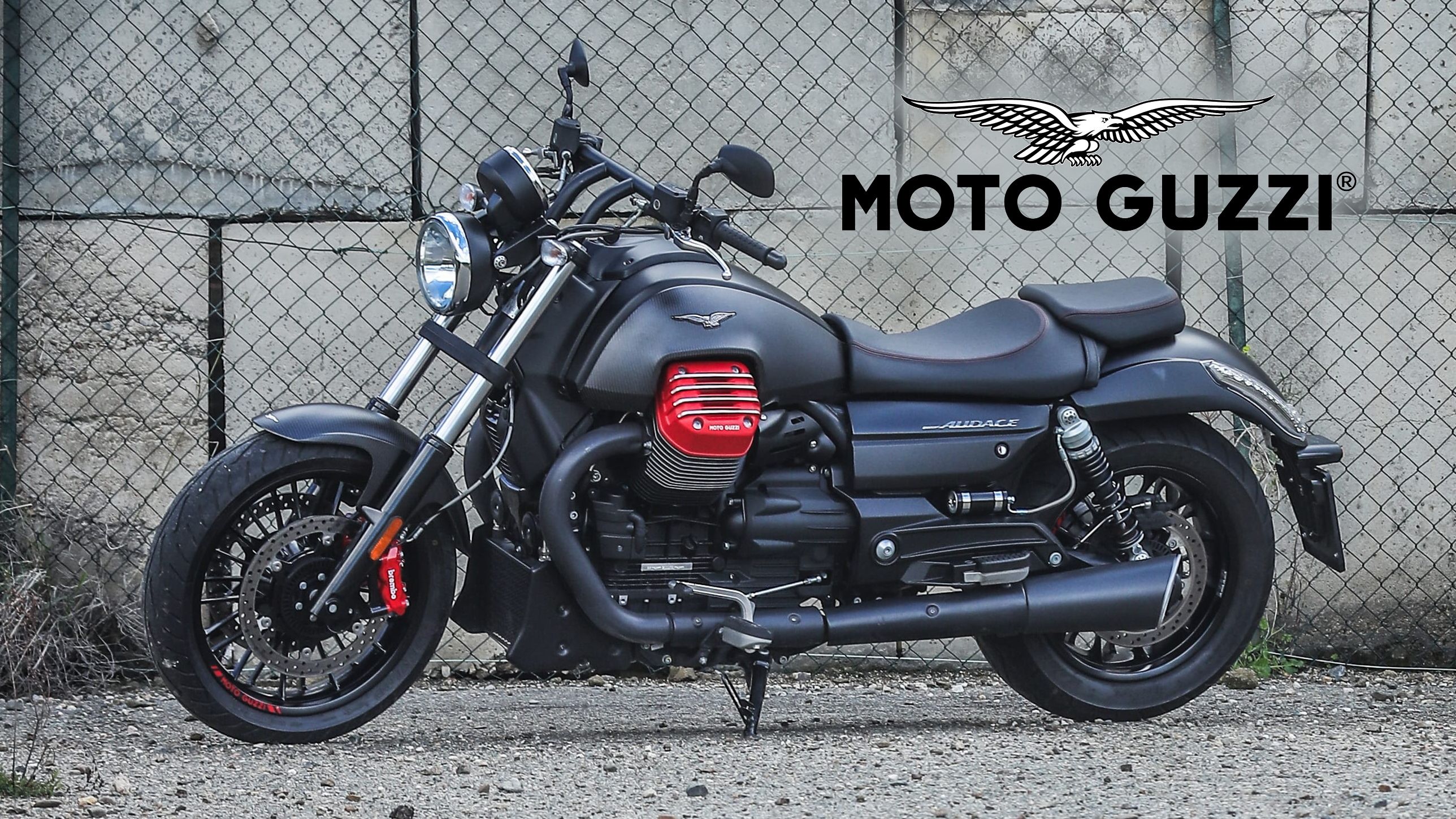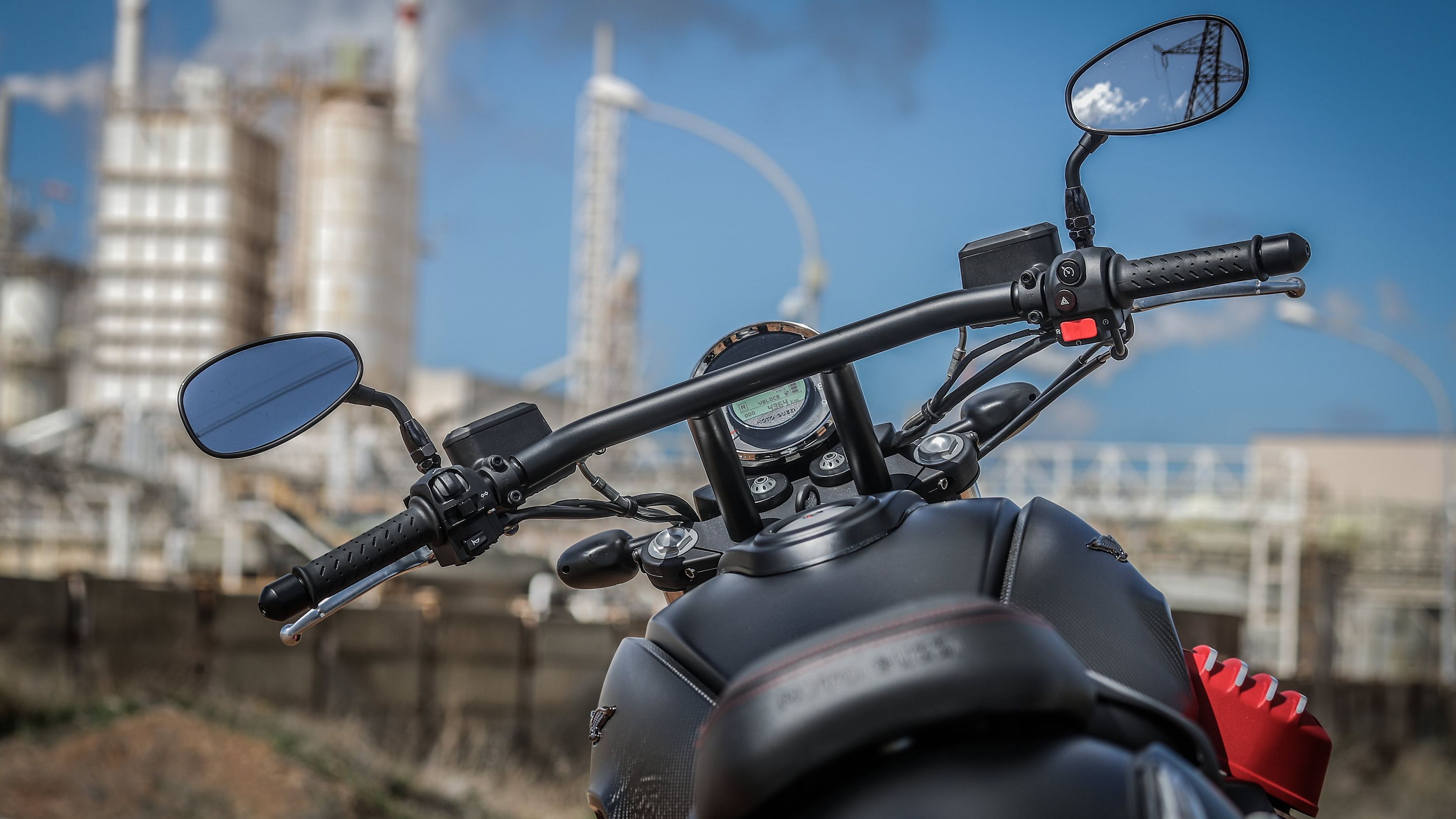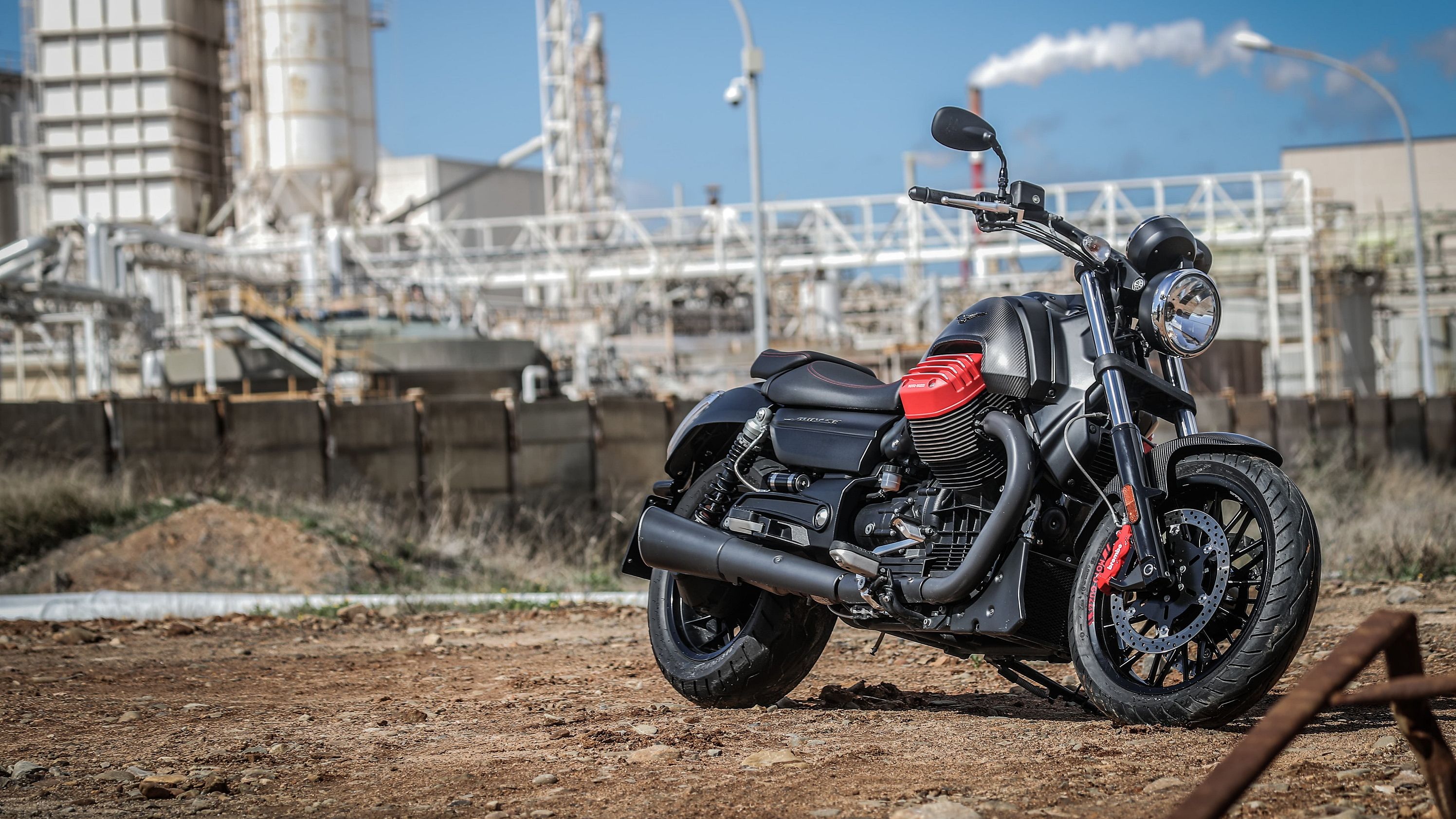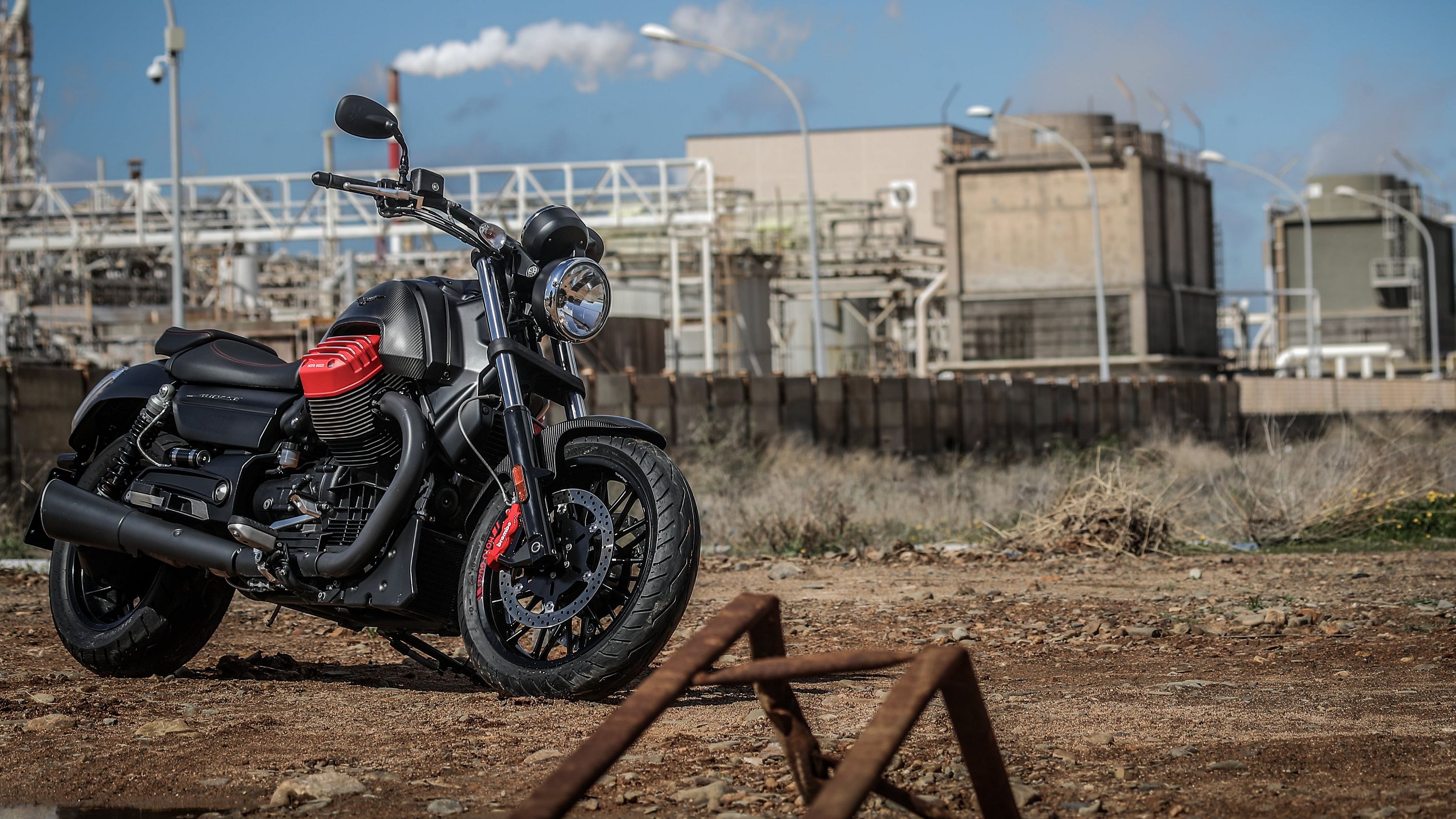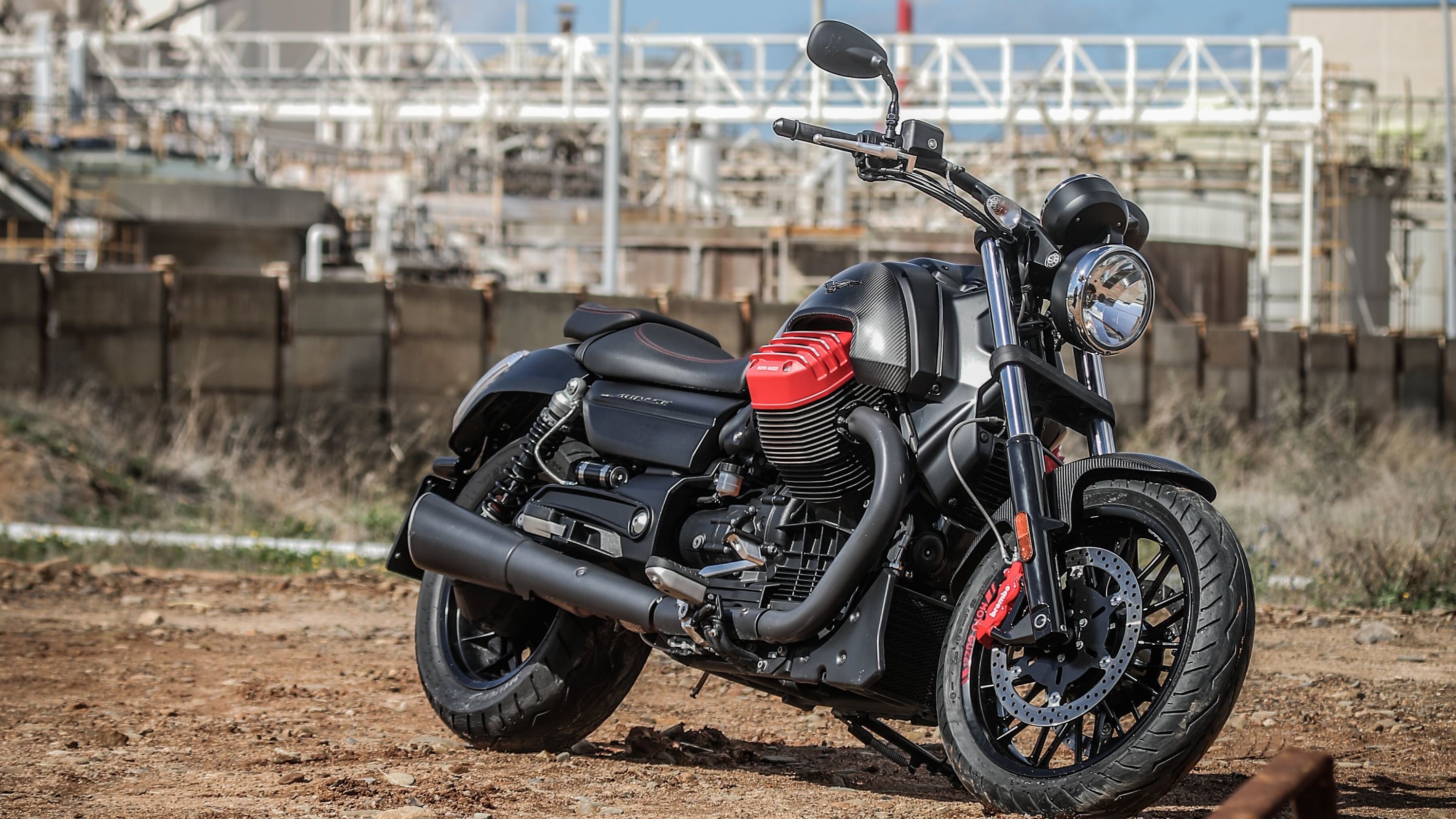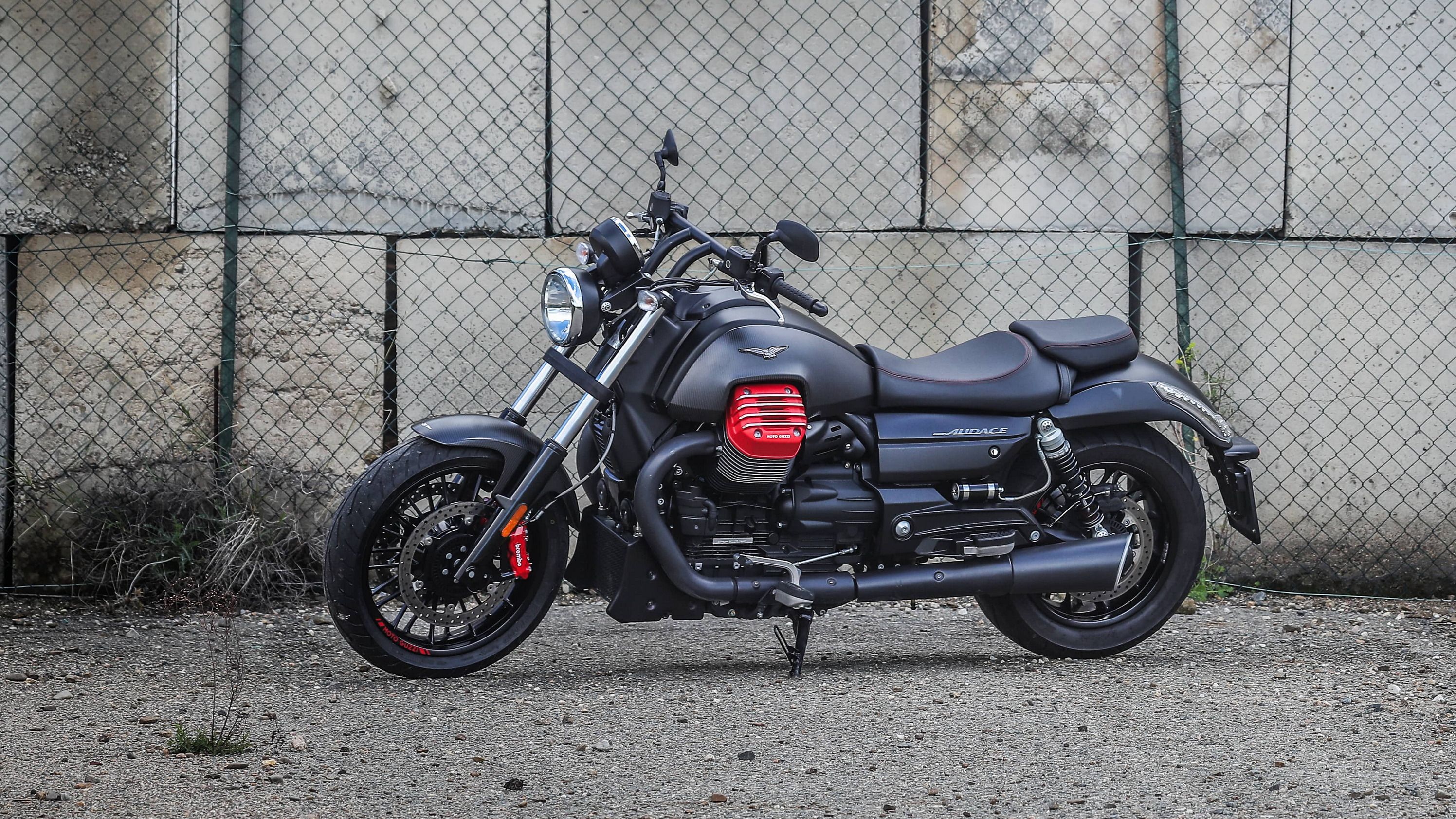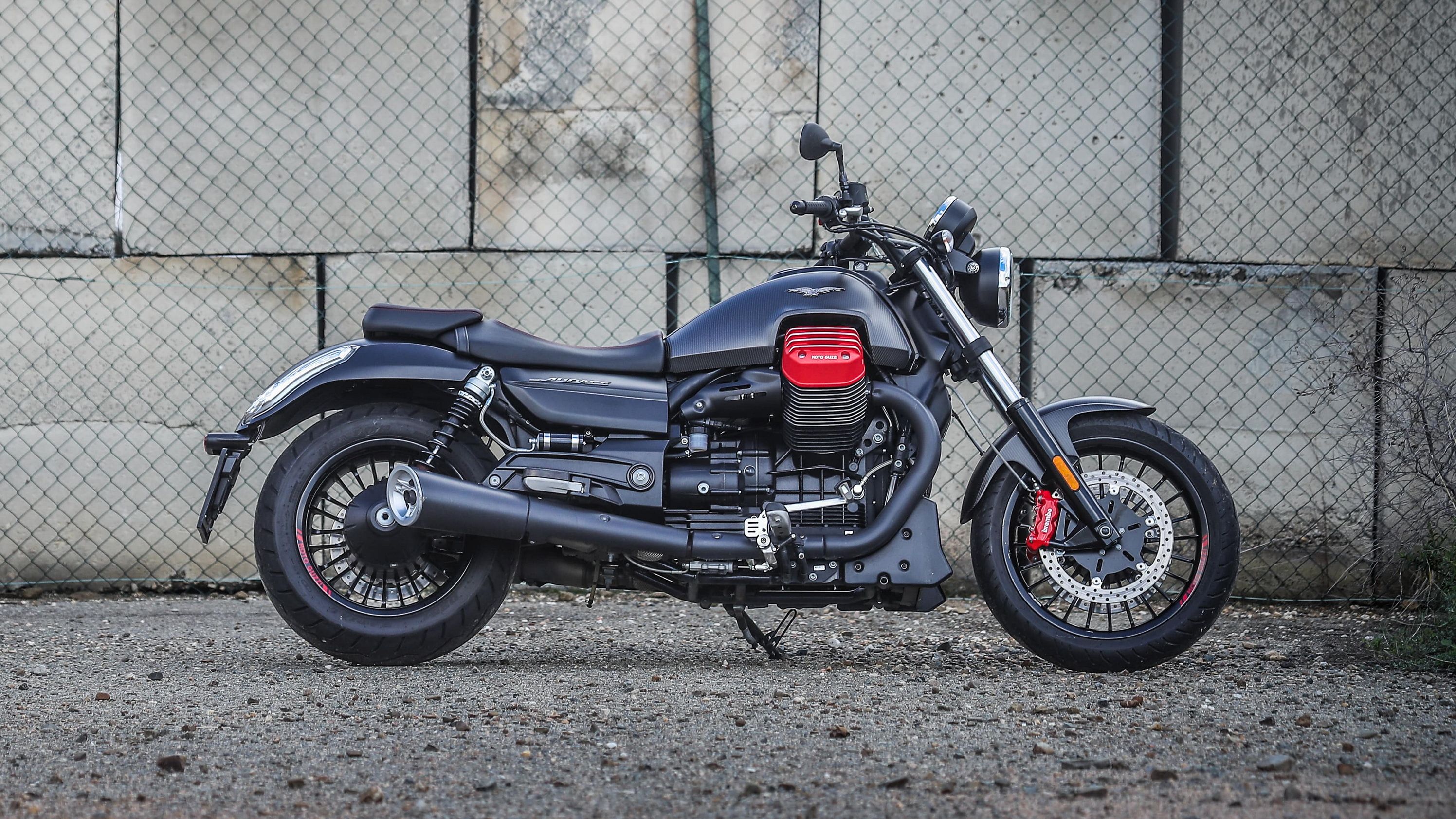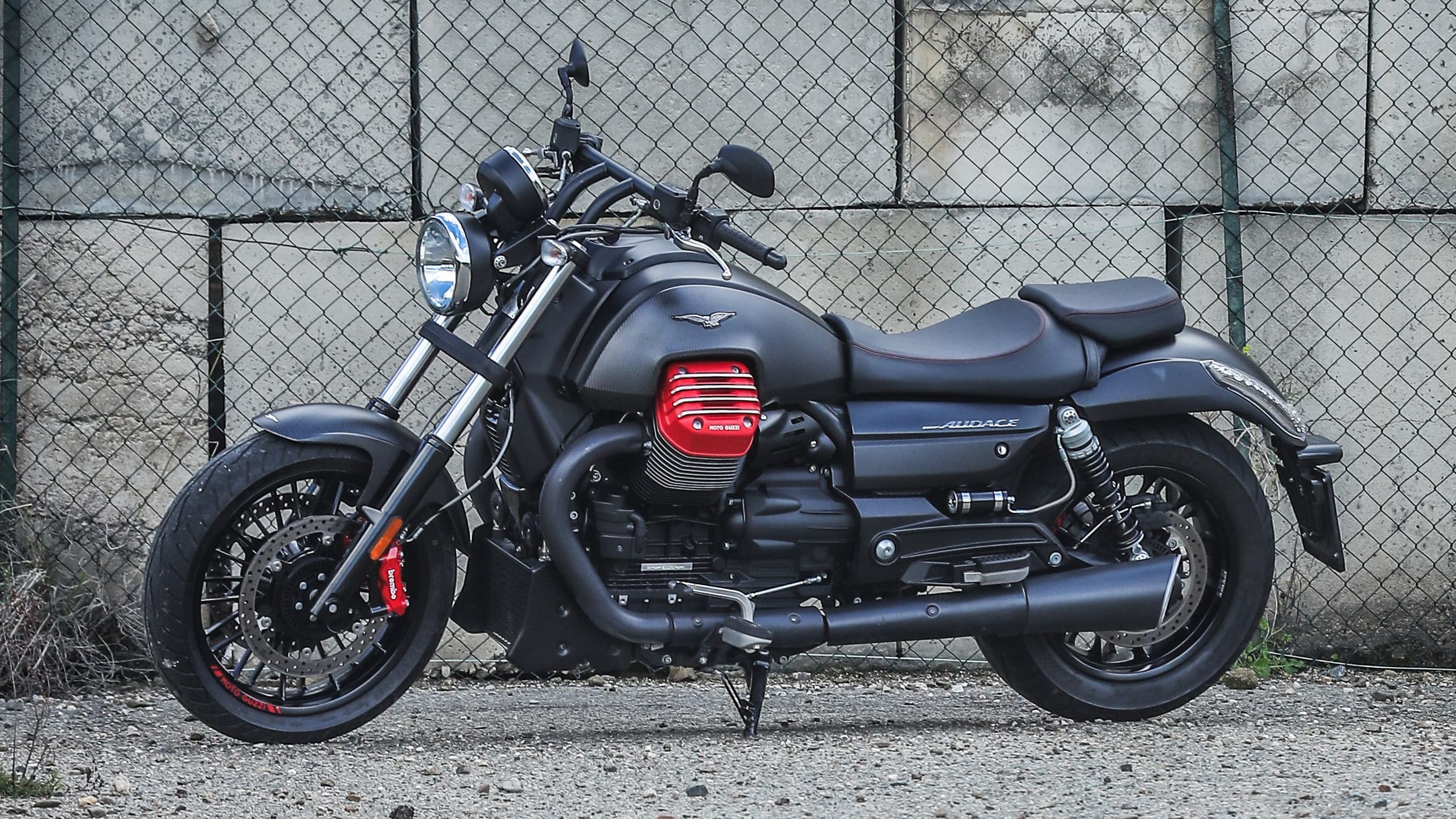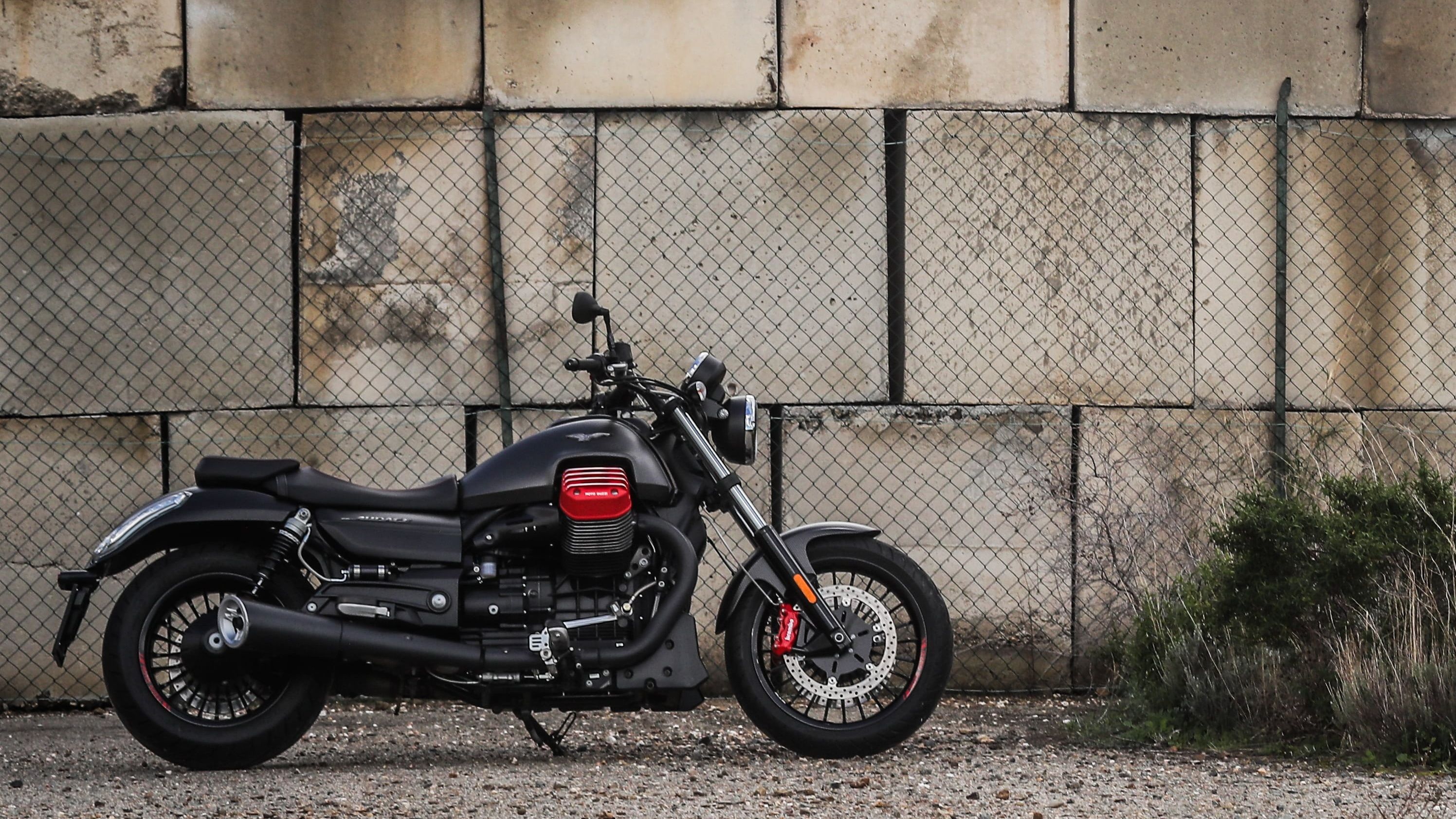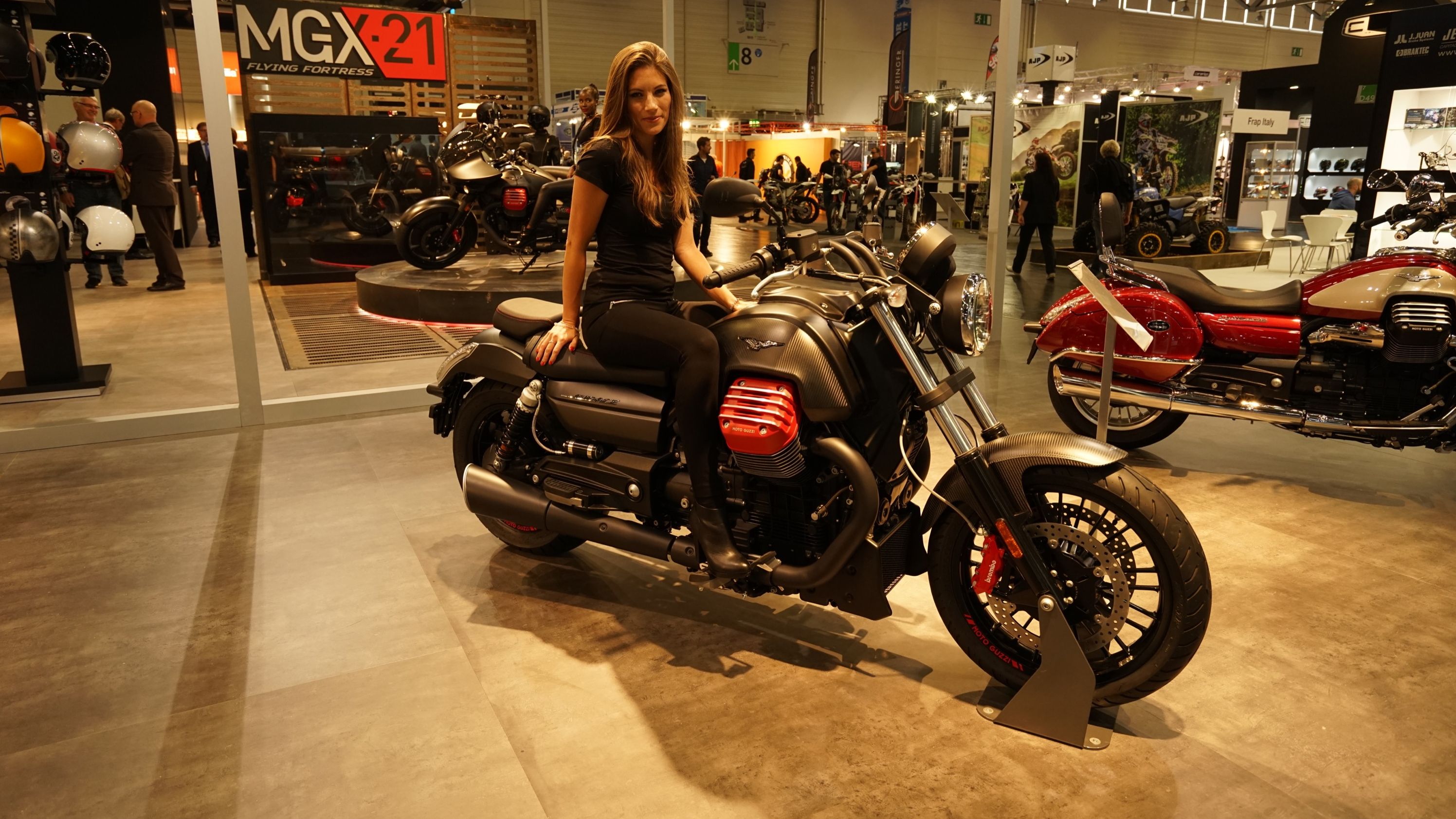“Audace” translates to audacious, daring or innovative-- a fitting moniker for Moto Guzzi's heavyweight cruiser Audace, and its carbon-fiber sibling, the Audace Carbon unveiled at the 2016 INTERMOT. These rides sport the typical, transverse-mount V-twin that gives MG products away at a glance, with 80-plus cubic-inches and almost 90 pound-feet of fun... er, I mean torque, on tap. Though it technically falls just shy of full-on, power-cruiser status, it's close enough for government work and will likely appeal to the same sort of rider. So how does it stacks up in the U.S. market?
Continue reading for my review of the Moto Guzzi Audace and Audace Carbon.
2015 - 2018 Moto Guzzi Audace / Audace Carbon
- Make: Array
- Model: 2015 - 2018 Moto Guzzi Audace / Audace Carbon
- Segment: Array
- Engine/Motor: V-Twin
- [do not use] Vehicle Model: Array
Design
'Guzzi borrowed heavily from the classic American-cruiser look, much like it did with the Eldorado and California. The Audace looks solid and heavy, mainly because it is heavy, with a 659-pound wet weight and engine compartment that's full-up every which way.
Skinny spokes on the cast wheels somewhat mimic the look of laced rims, and blackout treatment on the fork sliders, exhaust components and shock springs swings over into custom territory. The blackout treatment continues into the drivetrain, but polished cooling-fin edges keep the mill from disappearing into the black hole beneath the fuel tank.
A gentle slope in the upper lines of the fuel tank merge with a shallow-scoop saddle, and molded in rear turn signals keep the pillionless rear-end ultra clean. The drag-style handlebar is rather flat, but there's quite a bit of pullback in the risers so the hand position is rather relaxed, and riding position upright, and the footpegs are in the right place for a comfortable and cruise-tastic riding posture with a little bit of aggressiveness added liberally therein.
The Carbon version added to the lineup last year drops the “boards” in favor of regular pegs and drops the heel-toe shifter while moving the foot position to the rear for a sportier riding posture, and hits the exposed valve covers with a coat of red paint that really sets off the mill and calls attention to the fact that it's a sideways-mount V-twin coming at ya. As the ingeniously-clever name suggests, the Carbon sports carbon-fiber “sheet metal” for a modern look that leaves the warp and fill of the cloth visible, thus becoming part of the overall look.
Chassis
The saddle falls out at 29.1-inches high. While this is low by some standards, it's pretty tall compared to most American cruisers, overall. That said, it should still be manageable for most riders, even with the high center of gravity created by the tall cylinder heads and 5.4-gallon fuel tank.
A double-downtube, double-cradle frame pushes the overall length out to 96.25 inches for a little bit of horizontal stretch that keeps the bike from looking chunky, instead of merely substantial. ALS steel members make up the frame for a strong, if not light, foundation, and a yoke-style swingarm finishes out the structure with a pair of coil-over shocks on suspension duties. The shocks come with adjustable spring preload, but the massive, 46 mm front forks run with fixed preload and damping values and nothing in the way of adjustability. Nothing out of the ordinary there, but as adjustable forks become cheaper and more common, I look forward to seeing more in the way of ride control making its way into the cruiser segment.
Brembo binders slow this rig with a four-pot, opposed-piston caliper to pinch the dual, 320 mm discs on the front wheel, and a twin-pot caliper biting a 282 mm disc in back. ABS comes standard, but is non-switchable so you've got it whether you want it or not.
|
Frame: |
Double cradle tubular frame in ALS steel with detachable rear subframe |
|
Front suspension/ Travel: |
standard swingarm Ø 46 mm, with radical calliper mountain bracket and telescopes on the stanchions/4.7 in |
|
Rear suspension/Travel: |
swingarm with double shock absorber adjustable spring preload/4.7 in |
|
Brake system: |
Brembo |
|
Front brake: |
Dual 320 mm stainless steel floating discs, Brembo radial calipers with 4 horizontally opposed pistons: ABS as standard equipment |
|
Rear brake: |
282 mm stainless steel fixed disc, Brembo floating caliper with 2 parallel pistons: ABS as standard |
|
Rear wheel: |
200/60 R16" |
|
Front wheel: |
130/70 R18" |
|
Front tire: |
Metzeler Lasertec 100/90- 18 56H TL |
|
Rear tire: |
Metzeler Lasertec 130/80 -17 65H TL |
Drivetrain
The beating heart isn't exactly an exercise in subtlety, with a transverse arrangement that lets the 90-degree “V” stick out both sides. It produces the characteristic vibration normally associated with V-twin mills, and really does shake quite a bit at idle. Once you crack the ride-by-wire throttle, the engine naturally smooths out quite a bit, but it is by no means smooth no matter what the factory prose claims. I'm not saying it's a bad thing; I'm just saying it is.
At 1,380 cc, the mill measures out at just over 80 cubic-inches, or about the same as the old Harley-Davidson Evo, but with much more in the way of power. At 3,000 rpm, the mill cranks out 89.2 pounds of grunt, but wind it on out to 6,500 rpm and you'll unleash the full 95 ponies.
Four-valve, dual ignition heads allow the engine to open up and breathe, and the twin plugs provide positive flame-front propagation for complete combustion-- all good stuff for emissions, fuel economy and power generation.
As usual, the R-b-W feature and Weber-Marelli fuel injection enables some other cool things, such as the variable engine mapping that gives push-button control over power delivery with three separate presets, and a three-level, traction-control function so you can dial in for conditions and preference.
|
Engine: |
Four-stroke V 90 twin, four valves, dual ignition, Ride by Wire with 3 engine maps, 3 level adjustable traction control, Cruise Control as standard equipment |
|
Capacity: |
1,380 cc |
|
Maximum power: |
95 HP (71 kW) @ 6,500 rpm |
|
Maximum torque: |
89.2 lb-ft (121 Nm) @ 3,000 rpm |
|
Fuel system: |
Weber-Marelli electronic fuel injection. |
|
Exhaust system: |
Three-way catalyser with lambda probe |
|
Gearbox: |
6-speeds with final overdrive |
|
Final drive: |
CA.R.C. Compact Reactive Shaft Drive |
|
Clutch: |
Dry single plate with flexible couplings |
Price
The Audace is available in black, or mostly black with a red fuel tank, and rolls for $16,390 MSRP. I haven't seen a price on the Carbon yet, but it'll be close to that, I'm sure.
|
Color: |
Nero Travolgente, Matt Impetuoso Red |
|
Price: |
$16,390 |
Competitor
|
|
left> 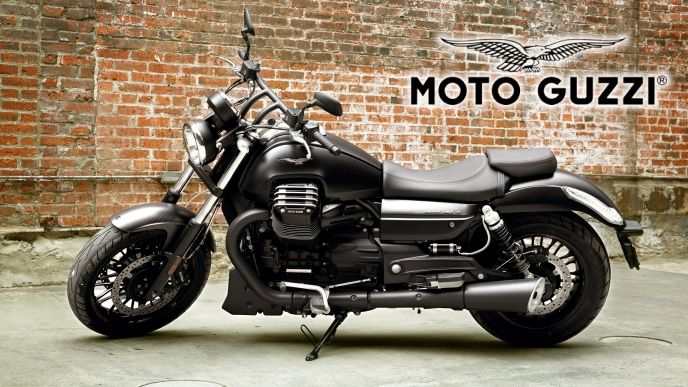
|
Since the Audace is such an American-looking power cruiser, I felt it only fair to see how it stacks up with a true American ride, so I grabbed a rather non-typical Harley power cruiser for my head to head: the Night Rod Special. Looks-wise, these two could almost be brothers from another mother. They seriously have similar overall shapes even if the MG engine and deep-scoop H-D seat are two obvious differences. Normally I'd say the H-D looks more natural to my eye, but the Night Rod is not your typical Harley, and both have charms all their own.
The Night Rod draws up a little shorter at only 96.1-inches long overall, but it also is a bit more low slung with a 26.6-inch, unladen seat height. Harley also carries a bit more rake up front with inverted forks for an overall more aggressive stance that I find appealing.
Both rides run dual front brakes, but H-D uses four-pot calipers all around where MG drops down to a two-piston binder in back, and both come with non-switchable ABS. Honestly, suspension is a bit of a bore with nothing beyond the obligatory preload adjustment in back, but the beefy usd forks on the Night Rod are certainly confidence inspiring to look at.
H-D runs a 60-degree, 1,247 cc V-twin that falls a little short of the 1,380 cc Audace mill. Harley typically falls behind in engine controls here, with no sort of variable engine maps or traction control -- a glaring technology gap that does nothing to help the brand on the world stage, to say the least. If there's any good news for H-D here, it's surprisingly in the performance department; the Night Rod pushes out 83.4 pounds of grunt versus 89.2 foot-pounds from the Audace. Too bad you have to wind the H-D up tighter than Dick's hatband to a lofty 6,750 rpm to get it all.
Pricing is closer than you might imagine with the Night Rod still coming out the prouder at $17,849 over the $16,390 tag on the Audace. I hate to say that to me, this means both are overpriced, but it is what it is.
He Said
My husband and fellow motorcycle writer, TJ Hinton, says, “I've always had an appreciation for MG, but I almost get a sense of deja vu looking at this ride, 'cause it looks so much like a domestic ride. Not so much to qualify as a ripoff mind you, just familiar enough to blend in a bit. The performance, however, is a definite selling point, and the electronic controls are the bee's knees; but I'll tell ya one thing: even as a long-time Harley rider, the vibration was a little shocking. Rubber engine mounts will only absorb so much, after all. I'm afraid the price is a deal killer for me. Were I in the market for something like this, I'd be tempted to go for the Night Rod instead since my skillset was in place decades before traction control and power-delivery modes were a thing, and I don't need those crutches.”
She Said
"Even though it is built on the California platform, the Audace, and its cousin the Eldorado, are not simply continuations of that California family. The Audace is the bad-boy performance side of the house, whereas the Eldorado is the bad-boy cruiser side; both have awesome styling and Italian sexiness. The bars are a bit wide for my liking and the rider triangle a bit more aggressive than I would go for, but all in all, an awesome ride."
Specifications
|
Engine & Drivetrain: |
|
|
Engine: |
Four-stroke V 90 twin, four valves, dual ignition, Ride by Wire with 3 engine maps, 3 level adjustable traction control, Cruise Control as standard equipment |
|
Capacity: |
1,380 cc |
|
Maximum power: |
95 HP (71 kW) @ 6,500 rpm |
|
Maximum torque: |
89.2 lb-ft (121 Nm) @ 3,000 rpm |
|
Fuel system: |
Weber-Marelli electronic fuel injection. |
|
Exhaust system: |
Three-way catalyser with lambda probe |
|
Gearbox: |
6-speeds with final overdrive |
|
Final drive: |
CA.R.C. Compact Reactive Shaft Drive |
|
Clutch: |
Dry single plate with flexible couplings |
|
Chassis: |
|
|
Frame: |
Double cradle tubular frame in ALS steel with detachable rear subframe |
|
Front suspension: |
standard swingarm Ø 46 mm, with radical calliper mountain bracket and telescopes on the stanchions |
|
Front wheel travel: |
4.7 in |
|
Rear suspension: |
swingarm with double shock absorber adjustable spring preload |
|
Rear wheel travel: |
4.7 in |
|
Brake system: |
Brembo |
|
Front brake: |
Dual 320 mm stainless steel floating discs, Brembo radial calipers with 4 horizontally opposed pistons: ABS as standard equipment |
|
Rear brake: |
282 mm stainless steel fixed disc, Brembo floating caliper with 2 parallel pistons: ABS as standard |
|
Rear wheel: |
200/60 R16" |
|
Front wheel: |
130/70 R18" |
|
Front tire: |
Metzeler Lasertec 100/90- 18 56H TL |
|
Rear tire: |
Metzeler Lasertec 130/80 -17 65H TL |
|
Dimensions & Capacities: |
|
|
Length: |
96.2 in (2,445 mm) |
|
Width: |
37 in (940mm) |
|
Wheelbase: |
66.7 in (1,695mm) |
|
Saddle height: |
29.1 in (740 mm) |
|
Curb weight: |
659 lbs (299 kg) |
|
Fuel tank capacity: |
5.4 Gallons (20.5 liters) |
|
Details: |
|
|
Color: |
Nero Travolgente, Matt Impetuoso Red |
|
Price: |
$16,390 |
References
Moto Guzzi Eldorado
|
|
center> |
See our review of the Moto Guzzi Eldorado.
Harley-Davidson Night Rod Special
See our review of the Harley-Davidson Night Rod Special.


